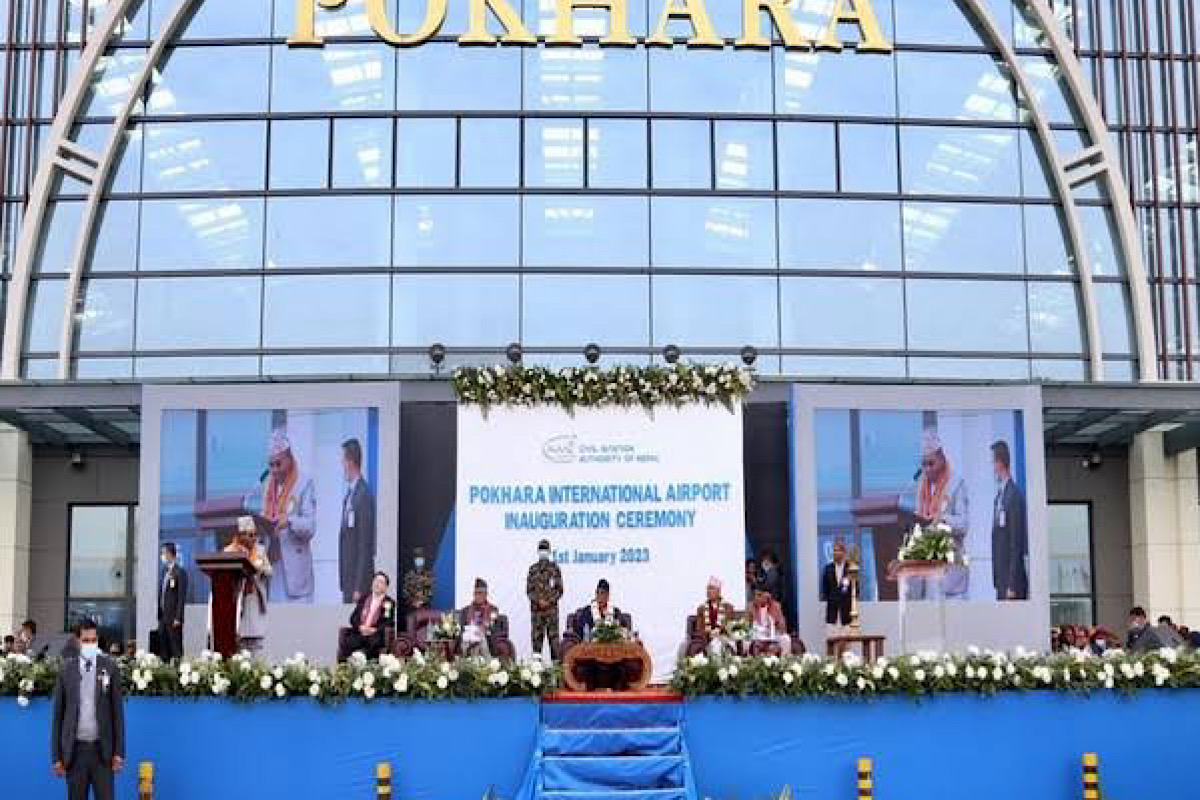In Nepal, where the majestic Himalayas beckon, a tale unfolds of a nation’s aspiration for progress and connectivity, intricately tied to a colossal international airport project. As Nepal embarks on investigating this venture funded and built by Chinese state-owned companies, it unfurls a narrative that extends far beyond the boundaries of Pokhara. At the heart of this investigation lies the Pokhara airport, a $216 million endeavour conceived over a decade ago under the auspices of China’s financial support.
The airport, envisioned as a gateway to the Himalayas and a catalyst for tourism in the region, has encountered turbulence even before the first regular international flight could grace its runway. The concerns raised are many. These include the project’s staggering cost, its questionable quality, and the lingering spectre of debt repayment. It is a poignant reminder of the delicate dance that developing nations engage in when accepting financial lifelines from global powerhouses.
Advertisement
In this intricate waltz, the spotlight shifts to China’s Belt and Road Initiative, a colossal campaign disseminating financial support globally, underlining a commitment to economic and diplomatic collaboration. Nepal’s predicament, however, showcases the potential pitfalls of such partnerships. The investigation into alleged irregularities in the airport project illuminates a broader discourse around the transparency and accountability of international infrastructure investments.
As developing nations grapple with the aftermath of borrowed funds, the Pokhara airport project serves as a stark cautionary tale, urging a reassessment of the dynamics between borrower and lender. The financial quagmire surrounding the airport’s construction raises questions about the wisdom of heavy reliance on external financing. While the intention behind the project was undoubtedly noble ~ an attempt to bolster Nepal’s economic prospects and create a thriving tourist destination ~ it now stands at the crossroads of financial strain and diplomatic intricacies.
The very essence of the investigation underscores a growing global sentiment ~ one of wariness and scrutiny concerning the methods and motivations behind China’s overseas infrastructure projects. The notion of a ‘flagship project’ under the Belt and Road Initiative faces scepticism, and the repercussions extend far beyond Nepal’s borders. Sri Lanka’s handover of a deep-water port and Pakistan’s substantial foreign debt to China serve as cautionary tales etched into the narrative of global infrastructure collaboration. It is crucial to recognise that the Pokhara airport is not merely a physical structure.
It symbolises the hopes and aspirations of a nation seeking a foothold in the global economy. The investigation’s outcome holds the potential to shape diplomatic ties, influence borrowing practices, and perhaps, recalibrate the trajectory of similar projects in the future. Nepal’s airport saga serves as a thread that prompts reflection on the symbiotic relationship between nations, the delicate balance of economic interests, and the imperative need for transparent, mutually beneficial agreements.
As the investigation unfolds, the world watches, hopeful that from the shadows of scepticism, a path to responsible and sustainable global infrastructure collaboration emerges ~ a path that honours the aspirations of nations while navigating the complexities of international partnerships.









